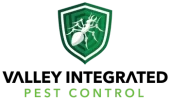Ants are among the most persistent creatures that can invade a home. They may seem harmless at first, but their presence can quickly become a larger problem if not addressed. Ants often enter through tiny cracks or gaps, seeking food, water, and shelter. Understanding the different kinds of ants that infest homes can help you take appropriate steps to prevent or eliminate them.

Common Ants Found in Homes
Ants come in many varieties; each type has unique habits and preferences. Knowing what kind of ants you’re dealing with can help find the right solution.
Sugar Ants
Sugar ants are small and often black or dark brown. These ants are particularly attracted to sugary foods and drinks, making kitchens their favorite spot in a home. If you notice trails of ants leading to a sweet spill or a jar of honey, you’re likely dealing with sugar ants. To keep them out, ensure that spills are cleaned promptly and food is stored in tightly sealed containers.
Carpenter Ants
Carpenter ants are much larger than most house ants and can cause significant damage over time. They prefer damp or decayed wood, where they carve tunnels to build their nests. While they don’t eat wood like termites, their activity can weaken wooden structures. You might spot sawdust-like debris near wooded areas in your home, which is a strong indicator of carpenter ants.
Odorous House Ants
Odorous house ants are small, dark-colored ants known for the distinctive smell they produce when crushed, often described as rotten coconut. These ants prefer sugary foods and moist environments, often entering kitchens and bathrooms. They can form large colonies, making them harder to control without persistent effort.
Pavement Ants
Pavement ants are tiny, brown to black, often seen near sidewalks, driveways, or patios. However, they can enter homes, nesting in walls, insulation, or under floors. Pavement ants are scavengers and will consume almost any food they encounter. Keeping your living areas free of crumbs and spills can reduce the likelihood of a pavement ant infestation.
Pharaoh Ants
Pharaoh ants are among the smallest ants commonly found in homes. They have a yellowish or light brown appearance. They thrive in warm, humid environments and are known for creating nests in hidden areas such as behind baseboards, inside walls, or under appliances. These ants can establish multiple colonies, making them particularly challenging to remove without professional help.
How to Prevent Ants in Your Home
Ants are resourceful and persistent, but there are steps you can take to discourage them from invading your home.
Maintain a Clean Environment
Ants are attracted to food, particularly sugary and greasy items. To prevent an ant infestation, keep your home clean by wiping down surfaces, sweeping floors, and vacuuming regularly. Focus on areas where food is prepared or consumed in your home, such as the kitchen and dining room. Store food in airtight containers, and avoid leaving dirty dishes in the sink overnight.
Eliminate Entry Points
Inspect your home for small cracks, gaps, or holes that ants could use to enter. Pay attention to doors, windows, and areas around utility lines. Use caulk to seal any openings and install weatherstripping where needed. These simple steps can make a significant difference in keeping ants out.
Manage Moisture
Many ants are drawn to moisture. Fix leaky pipes, faucets, or drains, and ensure that areas like basements and crawl spaces are kept dry. Consider using a dehumidifier if humidity levels in your home are high.
Use Baits and Traps
Ant baits are a common method to address an existing ant problem. These baits attract ants with a food source mixed with poison, which the ants carry back to their colony. Over time, this can eliminate the entire nest. Place baits near ant trails, but avoid using sprays near bait stations, as this can deter ants from taking the bait.
Seek Professional Help
If your efforts don’t resolve the issue, it may be time to contact a pest control expert. Professionals have the knowledge and tools to address even the most stubborn infestations. They can also offer advice on long-term ant control solutions to prevent future problems.
Signs of Ant Infestations
It’s essential to recognize the signs of an ant problem early. Here are some indicators to watch for:
- Ant Trails: Seeing ants marching in a line is a clear sign they’ve found a food source.
- Sawdust: Carpenter ants leave small piles of wood shavings near their nesting sites.
- Nests: Some ants, like pavement ants, create small piles of dirt near their nests.
- Food Contamination: Finding ants in your pantry or around open food indicates they’ve identified a feeding area.
Why Identifying Ant Types Matters
Different ant species require different approaches for removal. For example, carpenter ants often need targeted treatments to prevent structural damage, while sugar ants can usually be managed through cleanliness and sealing entry points. Proper identification ensures you’re using the right methods and not wasting time on ineffective solutions.
Keeping Ants Out: Identifying and Managing Household Species
Ants are tiny, but their presence in a home can quickly become disruptive. From sugar ants attracted to food crumbs to carpenter ants carving tunnels in wood, each type of ant poses unique challenges. Your first line of defense is to take steps to maintain a clean and sealed environment. If the problem persists, professional pest control services can provide tailored solutions. By understanding the types of ants that commonly infest homes, you can take control and maintain a comfortable, pest-free living space.
Keep your home pest-free with Valley Integrated Pest Control. Our team offers expert solutions tailored to your needs. Don’t let ants and pests take over—contact us today for professional, effective pest control services you can trust!






